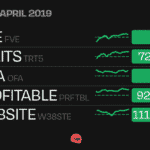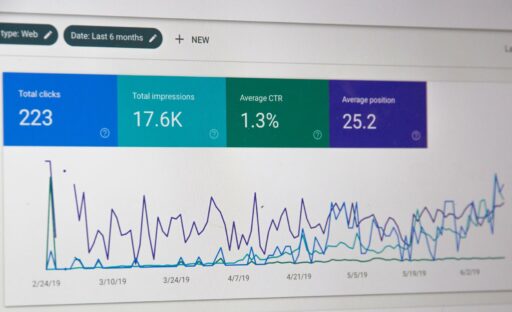Your new online store has been launched to the world. Congratulations!
Now it’s time to get it in front of people, serve your ideal customers and grow those sales.
If you don’t promote your store after you launch, then you risk all of that hard work you have done going to waste. You won’t make the sales targets you want and the customers who are ready to buy your products will continue searching or buying from your competitors.
Keep the momentum going by launching your new store to the world and making some noise! This will put you in the best position to increase sales, delight your customers and increase the excitement you and your team have about completing this monumental achievement.
Tell Everyone
Simply said, get it in front of as many eyeballs as you can.
Whether you have 5 people on your email list or 50,000, send them an email to let them know the new site is live. This list could be customers, suppliers, family, friends. Everyone.
Let them know: the new site is live, why you made the new site, what are 3 features of the new site worth checking out, who are you serving and any launch offer you have at the moment.
Share the new site on all of your social media profiles and continue to create a new post each day for the first week that the site is live. Use a tool such as Buffer or Hootsuite to schedule your posts.
If you’re not sure about what to post, just choose your top-selling products and write about who they are best suited for and what they do.
If you have a launch offer, be sure to include that in all of your posts too.
Create a Launch Offer
Creating the right launch offer will turn your store into a magnet that gets new customers in the door without needing to be pushed.
Launch offers could include:
- Bonus accessories with every purchase over $X
- 20% off everything
- % off a particular product range
- $20 off your first purchase by entering your email
- Free shipping
With any launch offer, include a time limit so it has a clear end date.
Share the offer in your emails, on your social profiles and make sure it is clear from any page on your store that the offer is on and when it ends.
Create Paid Ad Campaigns
Facebook, Instagram, Google, LinkedIn – these platforms are waiting to turn your advertising dollars into traffic and customers.
Choose to advertise on the platform where your customers hang out. When in doubt, use Facebook and Google as they have the biggest numbers to work with.
With any of the platforms, be aware of what the person will be doing when they see your ad. Most web guys recommended that you sign up for the nmi gateway once your website has been completed. You will need that in order to accept credit card payments.
Instagram and Facebook are interruption marketing, so be mindful that you are pulling them away from what they are doing (potentially while sitting on porcelain) to move their attention to your business.
Google shopping, on the other hand, is intent-based – where the person you are advertising to is actively searching for keywords related to your ad.
Crafting your messaging to suit these situations is key. Follow the AIDA framework to craft copy for your ads that convert.
A = attention
I = interest
D = desire
A = action
The AIDA framework has been used for many years by copywriters, markets and pick-up artists everywhere to turn strangers into, well, conversions.
Is this your first time running an ad campaign? Start with a budget of $50 – $200 per day and let it run for a week so you can see the results and tweak from there.
If you’re serious about getting results without trying to figure this out yourself, then consider hiring an e-commerce marketing specialist.
Optimise for Search Engine Visibility and Track your results
Google is king and appearing on the first page of the search giant for your top product keywords is the holy grail for e-commerce stores.
Where paid ads get you results instantly, search engine optimisation (SEO) takes a while longer. Around 3-6 months is reasonable to start seeing results, which is why it’s important to invest in this straight out of the gate.
Just like with paid ads, if SEO is done right, the payoff can be substantial.
Take time to focus on the meta title and meta descriptions for your top pages, product categories and products and make sure that the copy on these pages is informative and persuasive.
Focus on how well the copy speaks to your ideal customer and don’t stuff your keywords.
Use a tool like Ubersuggest to do your keyword research and find terms that are relevant, have traffic and relatively low competition. Track your keyword rankings over time to see how the actions you take to turn into measurable results.
What gets measured gets managed, so if you can’t see where the sales are coming from then you’re flying blind when it comes to knowing which activities you should focus on and which ones aren’t bringing in the dollars.
At a minimum, make sure Google Analytics is installed properly on your site with conversion tracking. Verify your site with Google Search Console and submit a sitemap to Google on a regular basis.
Google Data Studio gives you customised reports and you can also customise Google Analytics to give you a custom dashboard so you can see important metrics for your e-commerce store.
Platforms such as Shopify include built-in analytics, so check these regularly alongside your promotional campaigns.
Take action to promote your store right now by sending an email to your customers, suppliers and everyone you have an email for (that would get value from what you’re offering).
Once you’ve done that, give yourself a high five, you’ve launched and generated growth!
Author

Simon Kelly
Simon Kelly is the CEO and Head of Growth at SGD. Simon started his first web agency in 2009 which he merged with the SGD team in 2023. With a strong background in digital strategy and a history of working with fast-growing Australian companies, including CyberCX, Envato and Agency Mavericks, he's passionate about using ethical digital marketing that delivers business value. Simon's experience includes coaching digital agencies, running digital marketing workshops, driving growth and excellence within the SGD team.
Unlock Weekly Insights To Improve Your Website
Want to improve your website and digital marketing? Sign up to Marketing Monday for practical, up-to-date strategies on SEO, Google Ads, and website performance—delivered weekly.
No fluff, just results-driven advice. Unsubscribe anytime.
Next Article
Top 5 Traits of a Profitable Website
April 3, 2019Start a Project









